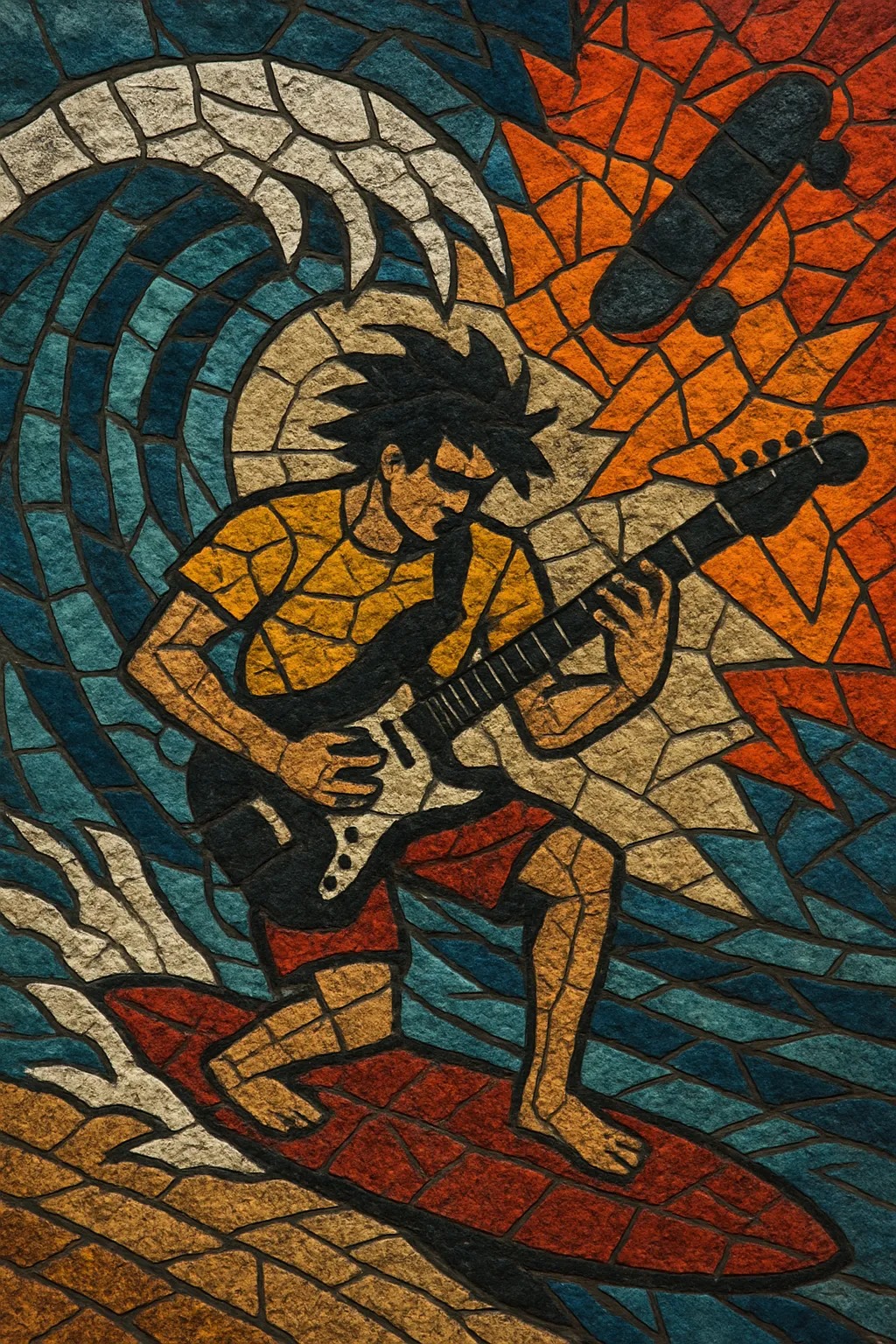Surf punk is a high-energy fusion of classic 1960s surf rock guitar sonics with the speed, attitude, and DIY ethos of late-1970s punk rock.
It typically features spring‑reverb‑drenched lead guitars playing twangy, tremolo‑picked lines over fast, down‑stroked power‑chord rhythms, with punchy bass and driving, straightforward drum patterns. Lyrics often reference coastal life, surfing, skating, suburban boredom, and irreverent humor, though many tracks are instrumental. The overall sound emphasizes immediacy, brevity, and raw, beach‑side adrenaline.
Surf punk emerged in Southern California in the late 1970s when local punk bands began reviving the twangy, spring‑reverb tones and melodic motifs of 1960s surf rock and playing them with punk’s faster tempos and rough, DIY execution. Early exemplars included Agent Orange and The Surf Punks, who fused surf guitar vocabulary (tremolo picking, glissandi, and modal riffs) with the aggressive energy and brevity of punk rock.
Through the early 1980s, surf punk became intertwined with the growing skate and beach subcultures in Orange County, Los Angeles, and Arizona. Bands like JFA (Jodie Foster’s Army) connected surf sonics with skate punk’s culture and tempos. Parallel acts such as Jon & The Nightriders and Man or Astro‑man? leaned more instrumental, applying punk propulsion to classic surf frameworks and helping spark a broader surf revival.
The 1990s saw a renewed interest in surf‑derived sounds, with groups blending garage revival grit and punk spirit. International acts (e.g., The Barracudas in the UK) showcased how the style’s sunny harmonies and sardonic edge could cross scenes and borders. In the late 2000s and 2010s, bands like Wavves and FIDLAR folded surf punk’s reverb and hooks into lo‑fi indie and garage contexts, keeping its coastal immediacy and humor while expanding its audience.
Surf punk’s principal legacy is its catalytic role in shaping skate punk aesthetics and energizing surf rock revivals. Its signature combination of bright, drenched leads and relentless punk drive continues to inform indie surf, garage revival, and lo‑fi scenes, maintaining a direct line from beach party twang to mosh‑pit momentum.


